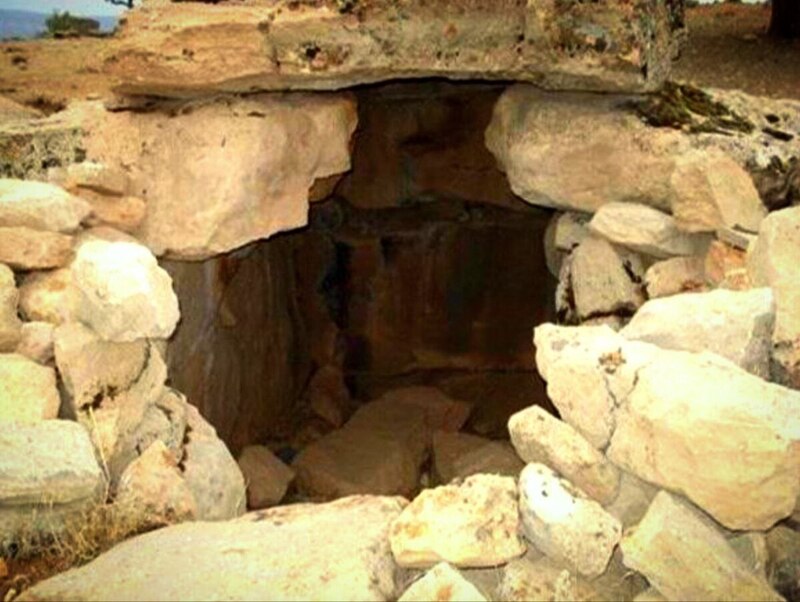Most of the archeological researches have proved that the East part of Kurdistan particularly the Ilam Province has been the inhabited area of most of the ancient civilizations. A large number of historical monuments have been found in Zagros that are still not known to people and unfortunately, they are about to be destroyed. One of these monuments is "Smiths' Cemetry" in Ilam Province in the East part of Kurdistan; an ancient cemetery with a history that goes back to pre-Iranian history. In 2002, Iran registered this cemetery as one of the national heritages of this country. This cemetery is located one kilometer away from "Saraw Karazan" village near Sirwan Town in Ilam Province. The archeologist experts believe that the architecture of this cemetery looks similar to the European "Dolmen" that is known as "Megalith" architecture.

Stone Tables or Dolmen is a kind of special method of putting stones on top of each other belonging to ancient European ages; Dolmens are a kind of group tombstones that are known as one of the most well-known Neo Stone ages in Europe. Within the geographical borders of Ilam Province in the East part of Kurdistan, there are a large number of these cemeteries that look like the Dolmens. A lot of research has been conducted on these cemeteries. In 1960, a group of archeologists from Iran and Belgium dug most of this cemetery and found 9 tombstones with the same architectural features; for instance, the "Milakaw" tomb in Malakshahi town, "Cham Sher", "Ban Shakar", "Taq Baram", "Mila Mer", "Sar Ashkaft", "Kala Noula", "Khanpari" and "Asngaran" in Sirwan town; the most popular of which is Asngaran (Smiths) tomb.

According to researches done in 2012 in this cemetery, conducted by Iran's government, this is a family cemetery with group tombs with a history that goes back to the Iron Age that is, 2550 to 3400 years ago. More than 100 group tombs have been found in Smiths cemetery, each of which belongs to a family. These tombs' tombstones are large pieces of stone that are very heavy. Each of these tombstones weigh about 1 to 5 tons. It is clear that these stones have been brought to this cemetery from the surrounding areas and have been dug into the ground. The stones are in circular forms and they had been put in the form of Pyramids.
The tombs were not dug for burying the dead bodies and the tombstones dug into the ground do not follow any particular pattern, however, the experts assume that the time and way of sunset had been considered on the angle of the tombs, thus, when someone or a family would have died in the morning at dawn, they would bury them while the tomb faced the east and if the deceased ones had died around sunset in the afternoon or evening, they would dig them a tomb that would face the west, and this is one of the popular beliefs among the people of Zagros and it shows these people's relationship with the nature.

As a result of digging the one-hectare area of this cemetery, many clay dishes and some sharp stones were found that date back to the Iron Age. The tombs in this cemetery are various, they are as high as 2 meters and as wide as 1.5 meters. The experts believe that based on the structure of these tombs and their distribution form in the cemetery, it is possible that this cemetery has been made during different eras and it is not particular to one historical time.
According to the experts' beliefs and researches the architectural features of this cemetery are "Kalabard" and it looks like the Dolmen's architecture in Salsburg in England; thus, it has been said that the tombs in the Smiths cemetery is similar to Dolmen made for religious purposes. It has been mentioned that in Dolmen architecture a kind of special building materials had been used however, in the Smiths cemetery, any form of such materials had not been used and the tombs were dug into the ground. The circular form of the tombs looks like the Stone Henges which are located 120 kilometers from London.

Smiths' cemetery is one of the historical monuments in Ilam Province in the East part of Kurdistan for people to visit but it is not known to the Kurdish people in the East or any other parts of Kurdistan.
Unfortunately, this cemetery has been invaded by smugglers many times and the items found in it have been stolen.








